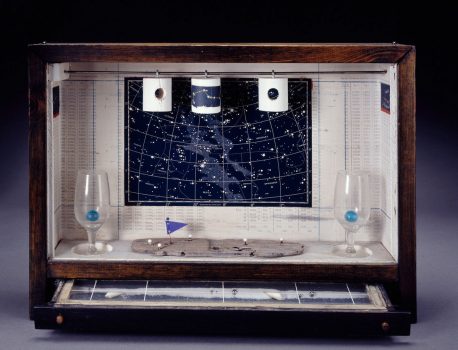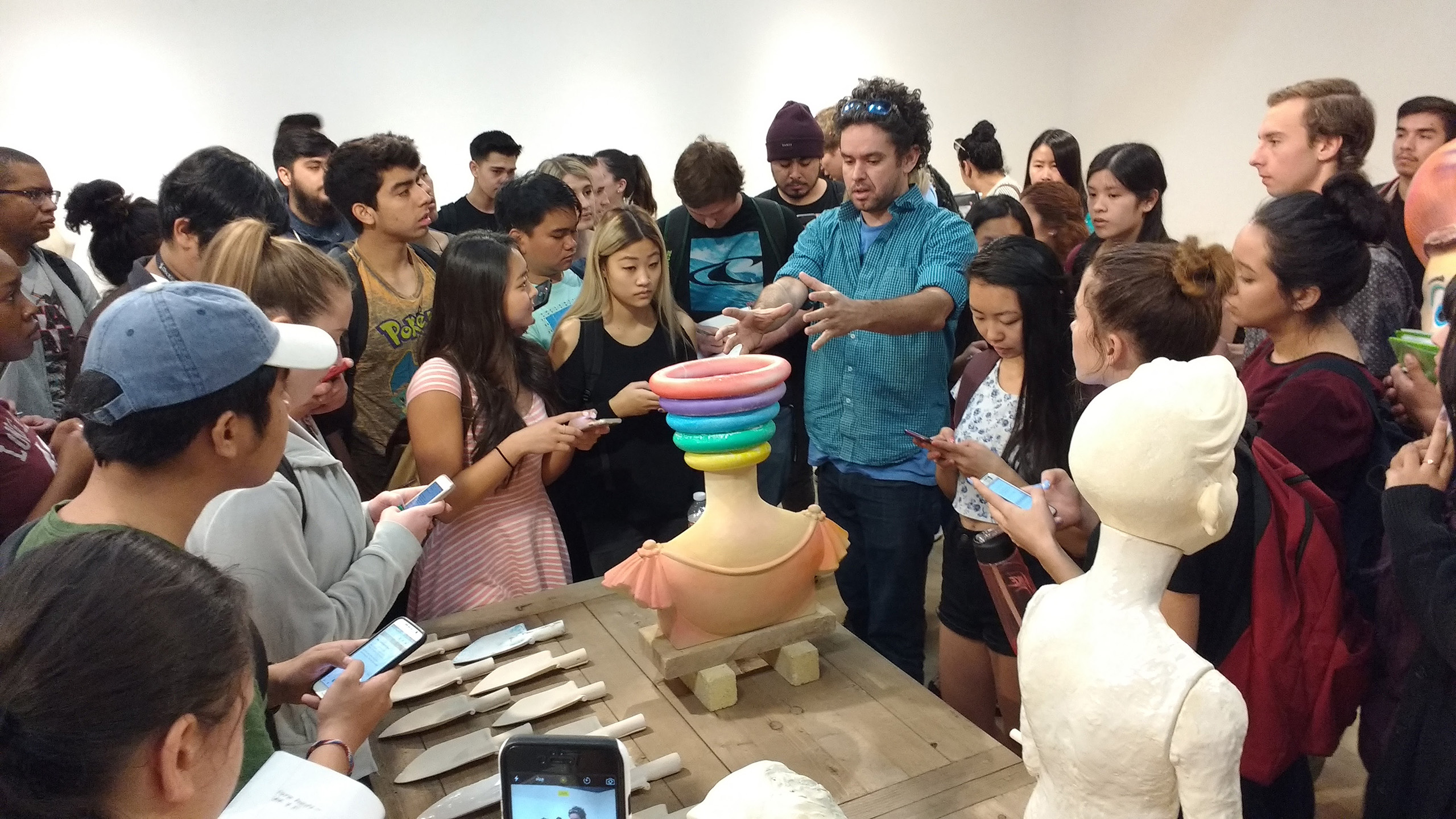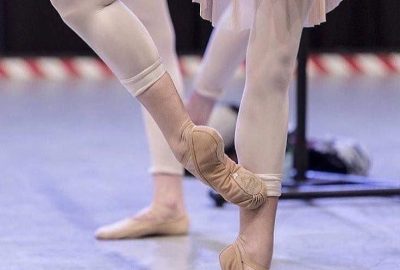The Reality of Fiction
This activity prompt for a hybrid or online class is intended to develop student critical thinking in the context of a freshman level, general education art course at the California State University (CSU).
It was written in a CSU Faculty Learning Community (FLC) during February & March 2016.
Critical Thinking Through Online Blended Discussion
I’ve been participating in a CSU FLC, Critical Thinking Through Online Blended Discussion, this spring. About 23 faculty members from a wide range of California State University campuses are participating. Our facilitators are Kimberly Vincent-Layton, MBA, an Instructional Designer in the College of eLearning, and a Lecturer in the Departments of Communication and Education at CSU Humboldt, and Cherie Vinopal, MA, a Senior Instructional Developer in Educational Technology/Instructional Design at CSU San Marcos.
Context
I’m excited about the discussion prompts presented below. They are a level of detail beyond what I have typically presented to students. Often I’ve simply given the students two artists to research and asked them to compare and contrast. I do think this more specific prompt will encourage more critical thinking on the students’ parts.
Yet I am also mindful that here on this Agent of .Ch/aos website I’ve filed this piece under Educatefun, my loose idea that education has become too codified and that we need to reempower students to follow their passions and define and pursue their own goals. I do like the specificity of this prompt, but it’s not an entirely outside the box activity. Would it be possible to realize this discussion in a different and novel way?

Eleonora Rey, Caracas, Venezuela, November ’15
I met Eleonora Rey, an extraordinary musical artist, and general force-of-nature, in November. Among her many amazing activities, she shared a video-in-progress with me. In it we see her walking through a rural area with kids and teaching them song and music. What is interesting is that she never says that she is teaching, or will teach, them anything. There is no formal, western instruction at all. She is simply walking and singing with them and interacting with them. Her knowledge and sensitivity allow her to interact with the kids and to develop their abilities and to draw them out, all without ever explicitly stating that she is doing, or that they must do, any of those things.
Discussion Prompt
- Campus: CSU Long Beach
- Course: Art 110
- Title: Introduction to the Visual Arts
- Project title: The Reality of Fiction
- Permalink: http://AgentOf.Ch/aos/reality-fiction
- Format: Asynchronous
- Method/Process: Class discussion & individual blogs
- Technology: Slack & WordPress
- Resources: Student Research
- Abstract: In this week’s discussion activity we will consider two artists, Joseph Cornell, a maker of intricate box constructions, and Vanessa Blaylock, a public artist who works in virtual worlds. We will consider the virtual nature of Cornell’s physical objects, and whether there is a tangible quality to Blaylock’s virtual works.
Art & Reality
This week I’d like you to research and discuss the artists Joseph Cornell and Vanessa Blaylock. These are very different artists. And yet there may be some interesting overlaps in considering their work.
- Joseph Cornell (1903, New York – 1972, New York)
- Vanessa Blaylock (1969, Washington DC – )
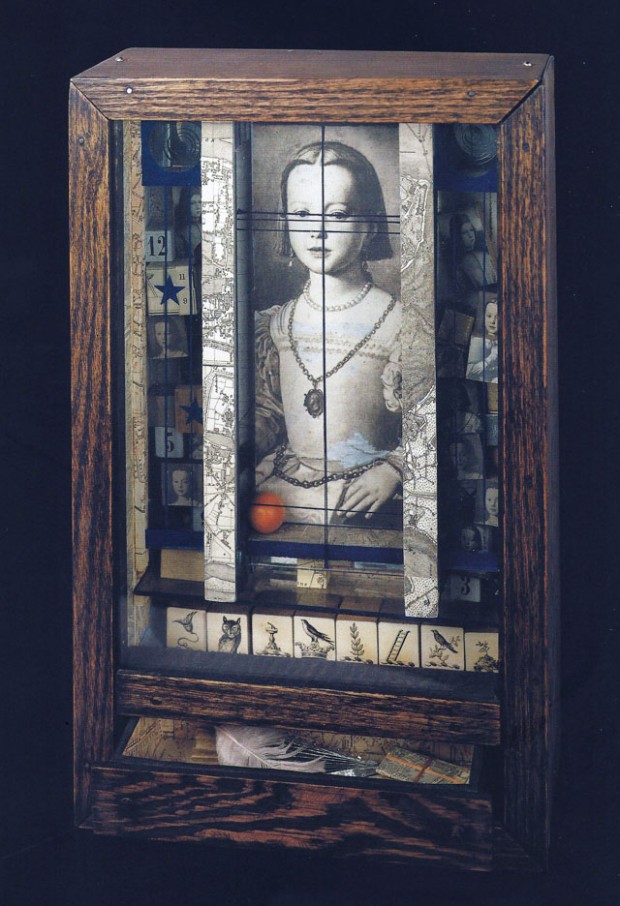
Medici Princess, Joseph Cornell, 1948
Cornell was a sculptor and filmmaker who made elaborate box constructions of intricate worlds. Blaylock is an avatar or virtual artist who creates collaborative works of public art inside virtual worlds populated with avatars whose “typists” come from around the globe.
Many of Cornell’s boxes contain themes suggesting world travel. If you didn’t know too much about him you might think of them as elaborate collages or souvenirs of his travels. It turns out Cornell didn’t really travel outside of New York. He was well informed, interacted with other artists, and exhibited works in New York, but he never visited, for example, Egypt. Instead his box containing aspects of Egyptian culture is not a souvenir of his experiences, but perhaps an imagining of what might be. Perhaps they are memory boxes for memories that never happened. Or “memories” of the imagination.
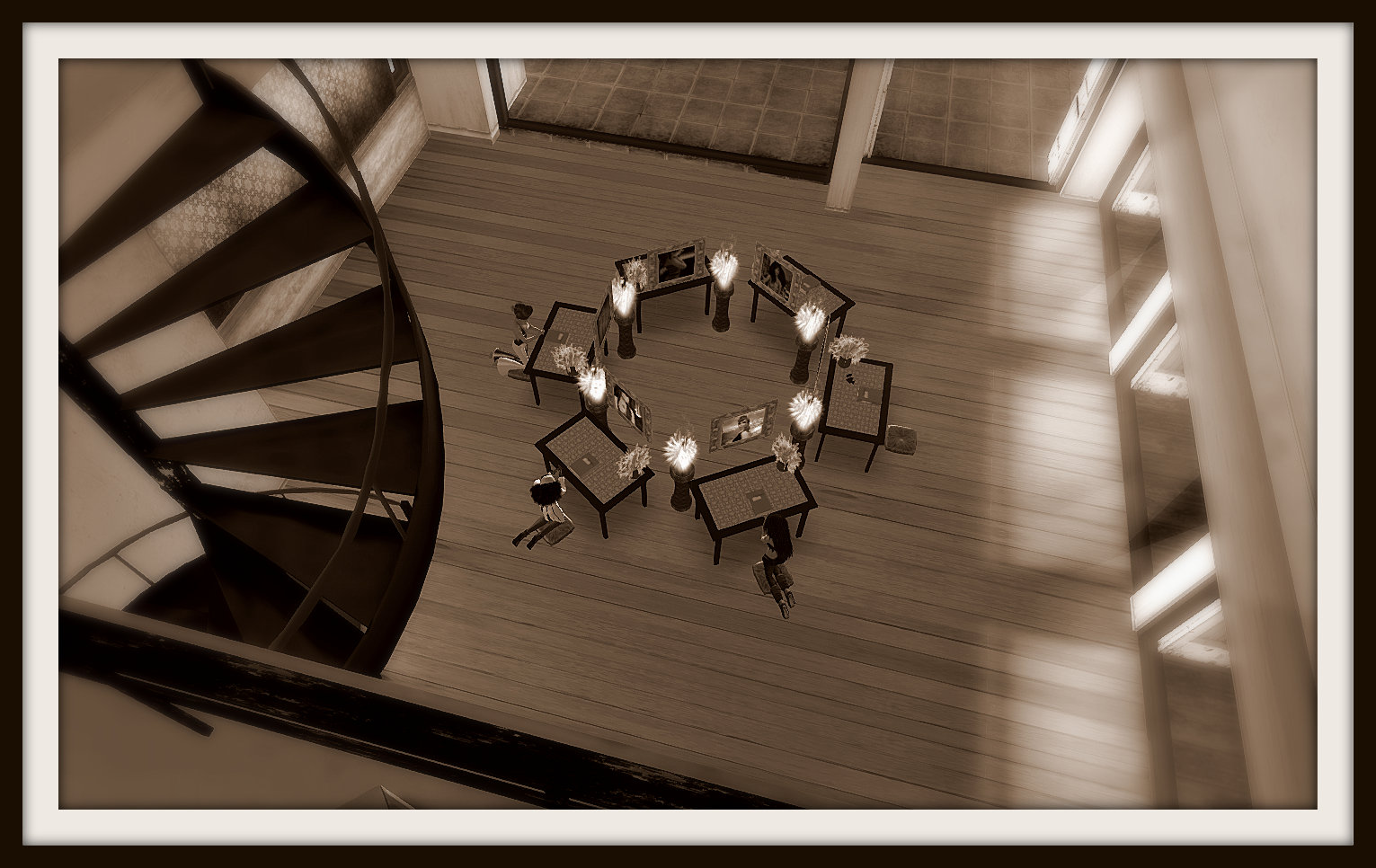
VB35 – Like a Prayer, Vanessa Blaylock, 2012
Cornell’s boxes may be fiction or fantasy, but they are physical, tangible objects. If they weren’t so valuable today that we mostly experience them behind glass in museums, you could touch one, play with it, and take it apart. Blaylock’s work exists only as pixels that depict virtual worlds. Each avatar in a virtual performance has a typist somewhere on earth. So a virtual performance space that has a few dozen avatars might represent “typists” from 6 continents all assembled in a virtual room. There is no physical object involved in, or resulting from, these works. They are global acts of pure network-based communication.
Look up both artists, research their ideas, and view images of their works.
Questions
1. Real & Virtual
Joseph Cornell makes physical objects about places he’s never been. Vanessa Blaylock’s work exists in virtual places that do not include any physical place. Are these works “real”? Or are they fundamentally something different than a painting or a sculpture?
2. Fantasy & Reality
The Italian prankster artist Franco Mattes has said,
What’s the difference between reality and fantasy? There is no difference. People pretend that they can tell the difference and that it is only crazy people who cannot tell the difference. But I think it is the other way around.
Isn’t Micky Mouse real? Actual? This guy is raising much more interest and money and shaping reality much more than me and you together and all of the people in here (art gallery) and probably the whole country (The Netherlands).
A related idea you might be familiar with is the phrase “perception is reality”.
Can creations of imagination, like Mickey Mouse or Vanessa Blaylock’s avatars, be “real”? Can they make tangible works that have meaning and value?
3. Harry Potter
Because Harry Potter is a work of fiction, does that necessarily mean that it is less meaningful and relevant to our lives than a work of nonfiction? Do you see a way in which a story featuring characters who are not real and events that did not happen can still have a powerful or emotional impact on us? Even though fiction is not factual, can it still contain a form of human truth? Is there a difference between “true” and “truth”?
4. Painting, Writing & Cyberspace
We’ve been painting for 40,000 years now. And writing for 6,000 years. Certainly both media are alive and well today. We’ve only been experimenting and creating in cyberspace for a handful of years.
Discuss how these 3 media in their many forms are more or less equipped to consider the issues and ideas of 2016. The issues and ideas of your time.
Painting has had a powerful voice for 40,000 years. Can it still have a powerful voice here in the 21st century? Or is painting as a medium challenged to discuss the ideas that matter to you? What of writing? As a new media, does work in or about cyberspace have any unique ability to discuss contemporary events and ideas from its own time? From your time?
Guidelines
Try to think outside the box and outside your own comfort zone as you discuss these ideas. Rather than safe and predictable ideas, see if you can take more unusual positions and back them up with evidence.
The evidence for your arguments can take many forms. You can directly cite the work and ideas of artists like Cornell, Blaylock, and Mattes. You can introduce ideas on the epistemology of art. And please do bring in examples from your own life and experiences.
A safe, or easy position on these ideas will not score as well as a more adventurous position that is backed up with references to artists, critics, and other thinkers.
Schedule
- Week Starts on Monday
- Due by Thursday Midnight: Class discussion on Slack
- Due by Sunday Midnight: Your blog post
Slack is mobile friendly and hopefully you can participate in discussions with a smart phone from most places on earth.
Points
- Blog Post – 20 points
- Discussion Comments – 3 @6 points = 18 points
Your 3 (or more) discussion comments can be new posts, or responses to classmate posts. In either case you should express new ideas not already stated. Responses should not simply be “me too” responses but should strive to push the discussion forward. You might agree with your classmate and go even further, or try to turn the discussion around and approach the ideas from a different direction.
It’s good to comment early in the week if possible so there’s time to interact with each other. After we finish our discussion on Thursday night, you’ll still have several days to work these ideas into your blog post.
Banner Image: Untitled (Celestial Navigation), Joseph Cornell, 1958
